The development of the heavy-duty, service standard semi-auto pistol continues. The latest is the Echelon 9mm from Springfield Armory.
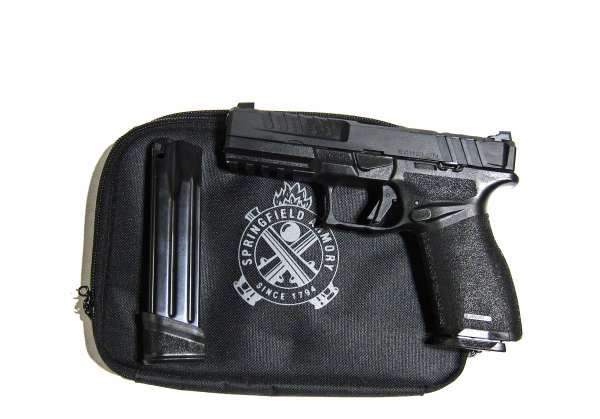
The notable aspects of the piece are well outlined in the massive media blitz that accompanied release of the new gun. It’s a ‘modern striker-fired pistol’ in the service (or uniform) format. The material accompanying the announcement made it clear that the target audience is agency/officer purchase.
I’m evaluating this one as if it’s a gun for agency purchase with an emphasis on how it’ll work out for plainclothes and off-duty. It won’t be the platform for pistol-mounted optics and lights for this evaluation.
The chassis system is not a new development. I had someone already tell me, “they’re ripping off SIG.” If so, we’re forgetting the S&W M&P (not movable between grip frames), the Beretta APX, the Ruger American/Security-9 and others.
The modular aspect refers to the chassis (which contains the firearm’s serial number) being user-transferable to other grip frame units; in that case the critic is okay. Too bad he stopped there.
The Springfield/HS pistol was carefully considered. It’s not just the “Central Operating Group.” It is a stainless-steel chassis, holding the fire control, a single-action (pretensioned striker) pistol. That makes for a good service trigger with a short reset.
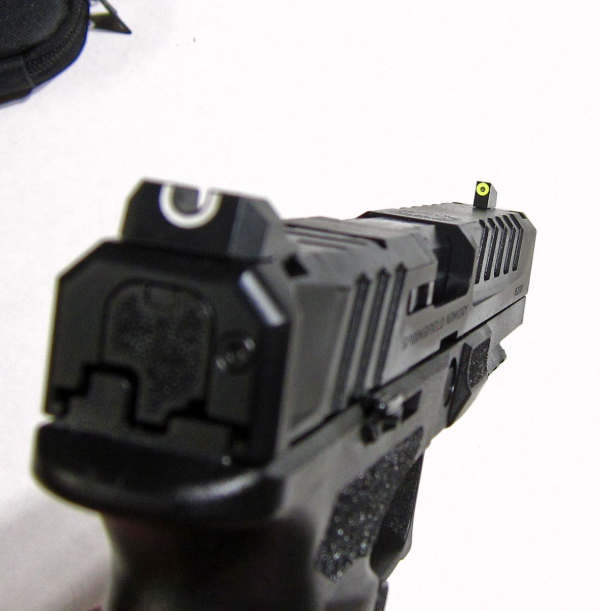
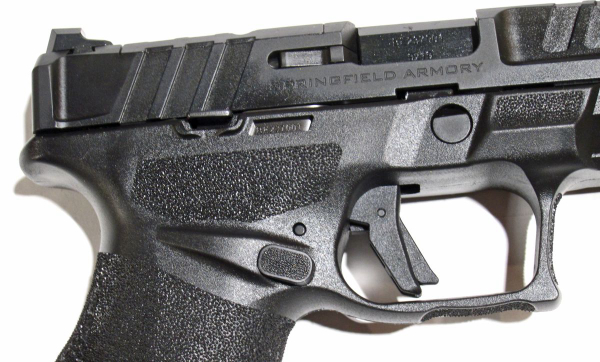
Isn’t that risky? Well it could be without the “secondary sear” design. Is it like the sear safety in the Ruger American?
It looks just like the S&W Hand Ejector revolver hammer block – it doesn’t work that way, strictly speaking. In a well-done interview on Athlon Outdoors (conducted by Fred Mastison), Rob Leatham explains that “… in the 1911 world, it would be a half-cock notch.”
It does appear to work that way. The primary sear (at the top of the image above) is behind the ‘secondary sear.’ It is under spring tension. To make it work, the trigger is pressed and that moves the secondary striker back and down as it presses against the primary sear. The secondary seems to rotate down out of the way, allowing the sear to slip, releasing the striker.
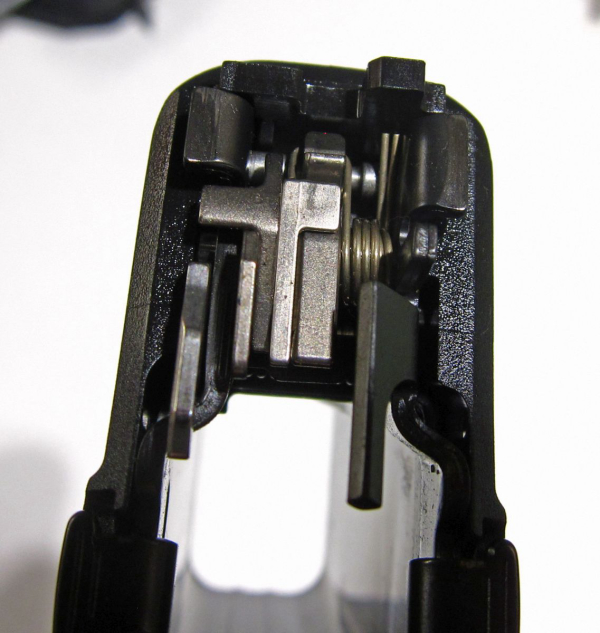
If something breaks and the sear is jarred off engagement, it looks like it’ll be stuck against the ‘secondary sear’ as well as stall against the sear block.
The vertical striker block plunger in the slide provides the “belt and suspenders.” If the trigger doesn’t move back (there’s a blade in the face of the trigger to prevent rebound if dropped), the striker isn’t allowed access to the primer.
Or that’s how it appears to me.
Grip module sizes likely will vary – in addition to the interchangeable backstraps. Small and large modules are available, the gun ships with the medium grip module.
The fit of the medium grip module was, far as I can tell, close to perfect for me.
The Echelon also features the latest attempt to make a perfect fit for any pistol-mounted optic. As everyone in firearms media shot the Echelon with optics, I elected not to – but the VIS mounting system is interesting. I have optics around and will likely fit one up to get the experience – and to do some bench testing of the gun.
But I’m reviewing it for those who, like me, likely will never go to an optics equipped sidearm for regular use. I’m not anti-optic, far from it. I just have too many decades behind the irons – and I no longer teach.
The sights on this ‘basic’ model feature the “U-Dot” tritium/luminescent set and they’re superb. Think “Hellcat.” I’ve had people complain about the U-notch rear.
I don’t seem to notice it when I’m busy shooting.

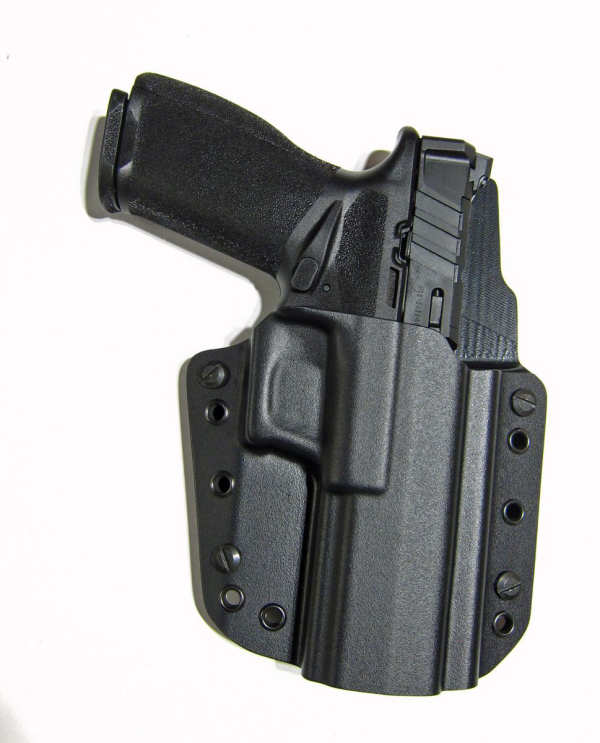
The 4.5” barrel pistol comes with a 17-round magazine and a 20-round magazine. It weighs in at 23.9 oz with the standard magazine (empty) and at 24.3 oz when the magazine with the extension is seated in the gun.
The gun arrives in a box with a zippered case.
The slide takes some description: it’s no longer enough to have grasping grooves on the sides of the slide at the rear. Now we have to have them at the front. Then we got a wide expanse at the rear of the slide, ‘wings,’ if you will, to assist in running the slide back.
Nope, we need more. Now the forward grasping grooves terminate in a “trench” on each side just ahead of the ejection port. If you want to ensure a round chambered when you dropped the slide, grasp the trench on each side forward of the ejection port, you can draw it back enough to see (and feel) the chambered round.
There’s no place you can grab the slide that you can’t move it; it works.
Slide stop levers are bilateral as is the magazine release button. It’s a bilateral pistol and that’s not a bad idea.
To me the critical aspect is grip; the frame is sculpted to precisely fit my hand. At 1.2” wide at the widest point, it features a high cut under the trigger guard – which itself is sculpted on the bottom as well as being textured on the bottom. It’s a wide-open trigger guard and should pose no trouble for most hands when gloved.
There are sculpted pads forward of the trigger on the sides of the grip module, so called ‘gas peddles’ that are wider at the base and textured. The grip has a texture that’s aggressive without being snaggy.
Put the grip together with the visual component, it’s not a stretch for me to say that the Echelon has the best ‘feel’ of the field. The grip is a strong fit, the visual solution in the sights is close to ideal for me.
I wonder how it’ll shoot?
To be continued –
-- Rich Grassi